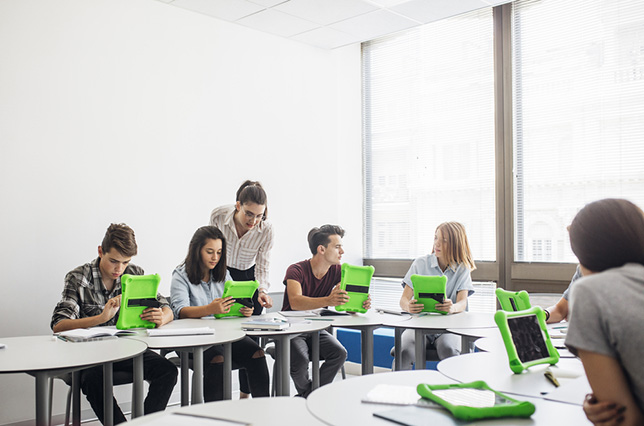School Design Impacts Teacher Happiness and Effectiveness, New Research Finds
- By Yvonne Marquez
- 10/03/19
While school design is geared towards students’ success, it’s important to note a teacher’s workplace can take a toll on their well-being, job satisfaction and performance. A new survey by Corgan, a global architecture and design firm, takes a look at how school design impacts teacher happiness and effectiveness in the workplace.

Corgan’s online survey collected responses from 1,000 K-12 teachers from across the United States about their satisfaction with current school design, their specific design needs, how design affects their well-being and effectiveness, and how design impacts future job decisions.
The findings reveal that poor design and unmet needs reduce teacher efficacy in the classroom. Nearly all teachers surveyed (98%) say that a well-designed classroom makes teaching more enjoyable.
Here are the top takeaways from the survey:
- A well-designed learning environment is important to teacher happiness, recruitment and effectiveness. Nearly all teachers (97%) say the design of the learning environment is important to helping students learn. Four in five teachers (80%) say the design of the learning environment is important to their ability to be a good teacher. And 68% say the design of the school and classrooms play a factor in their decision for accepting a job.
- Teachers are least likely to be satisfied with the design of teacher-only spaces. Only 57% are satisfied with the design of the teacher break room and the same percentage are satisfied with the design of teacher work areas. To compare, teachers are most likely to be satisfied with the design of the library/media center at 84%.
- Eighty-five percent of teachers want more flexibility for their teaching environment. And 62% agree the design of their classroom and teaching spaces limits their teaching style.
- Technology-ready classrooms and easy-to-move furniture are very important to teachers, with storage space, natural light and convenient electrical outlets trailing right behind them.
- Open collaboration space within the classroom is more important than having additional rooms. 54% say it’s very important to have an open collaboration space, while few teachers want additional walls or physical barriers within their teaching space.
About the Author
Yvonne Marquez is senior editor of Spaces4Learning. She can be reached at [email protected].